1. Bunny for Brontosaurus*How did sauropods pose those straight necks? Well, how do various vertebrates today characteristically hold their heads while engaged in feeding, locomotion, and just hanging around? How do you believe sauropods held their heads? read more about characteristic poses. |  |
2. we're talking straight, and kind of droopy likeWhile the necks of most birds and many mammals form a sigmoid or reflex curve, sauropod necks just hang out there, sort of droopy like. |
 |
3. straight talk about sauropod necksJoin the distinguished-yet-affable Charles Gilmore (right), John Bell Hatcher, Carl Wiman, and Werner Ernst Martin Janensch for lunch and some straight talk. (Charles Gilmore, 1924; photo: Shorpy) |
 |
4. ApatosaurusApatosaurus louisae (CM 3018) studied through digital techniques to reconstruct the neck osteology, the reachability envelope achievable by the neck, some details of the re-mounting process for Apatosaurus louisae (CM 3018), and a kinematic exploration of its walking gait. |
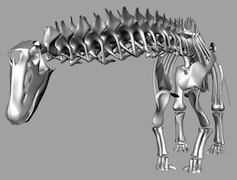 |
5. BrachiosaurusThis sauropod was initially mounted with sufficient plaster and artistic license to bend the neck upwards giraffe-style, although the actual fossil vertebrae provide no evidence that the neck was other than a straight extension of the back. |
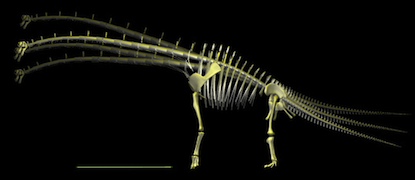 |
6. CamarasaurusThis sauropod is often depicted with a vertical neck, largely from misinterpretation of the death pose of a juvenile specimen, contrary to the many specimens with articulated vertebral columns that suggest the neck emerged straight at the shoulders. |
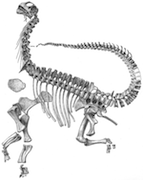 |
7. DicraeosaurusDicraeosaurus has a short neck that matches its diplodocoid character of shorter forelimbs than hind limbs. But unlike the dorsal vertebral columns of Apatosaurus and Diplodocus, which are now recognized to have substantially straight backs, those of Dicraeosaurus form a slight arch, which created a downward slope at the base of the neck. This slope continues into the neck, suggesting strong specialization for low browsing. |
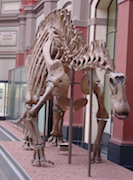 |
8. DiplodocusThis diplodocid had a longer neck than that of its sister taxon Apatosaurus, yet could not raise its head as high. It could reach far above shoulder height (contrary to some false statements made of our research), but was more specialized for reaching laterally and downward than upward. |
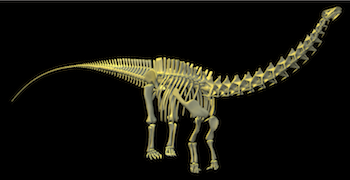 |
9. EuhelopusOriginally reconstructed with its neck in precisely the same pose as found, it is still often regarded as a high browser. But the vertebrae at the base of the neck are dorsiflexed in the frequently occurring death pose. Remove the postmortem dorsiflexion and voilá, another low browser. |
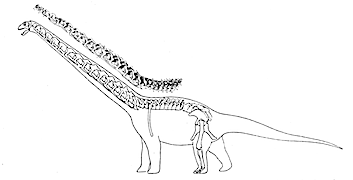 |
10. ManenchisaurusHow could it have raised its bizarrely long neck, as sometimes depicted? The cervical vertebrae (such as C18, shown here) do not form an upturn at the base, contrary to some silhouette illustrations, and the low neural spines of the dorsal vertebrae would provide poor mechanical advantage for raising. Think low browser instead. |
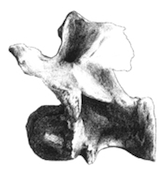 |
11. AngloposeidonOne big cervical vertebra of clearly brachiosaurid morphology. Impressive, but which cervical was it? It's grandeur hinges on that estimate. |
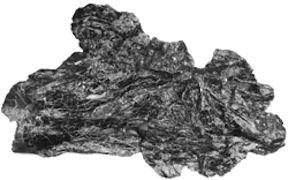 |